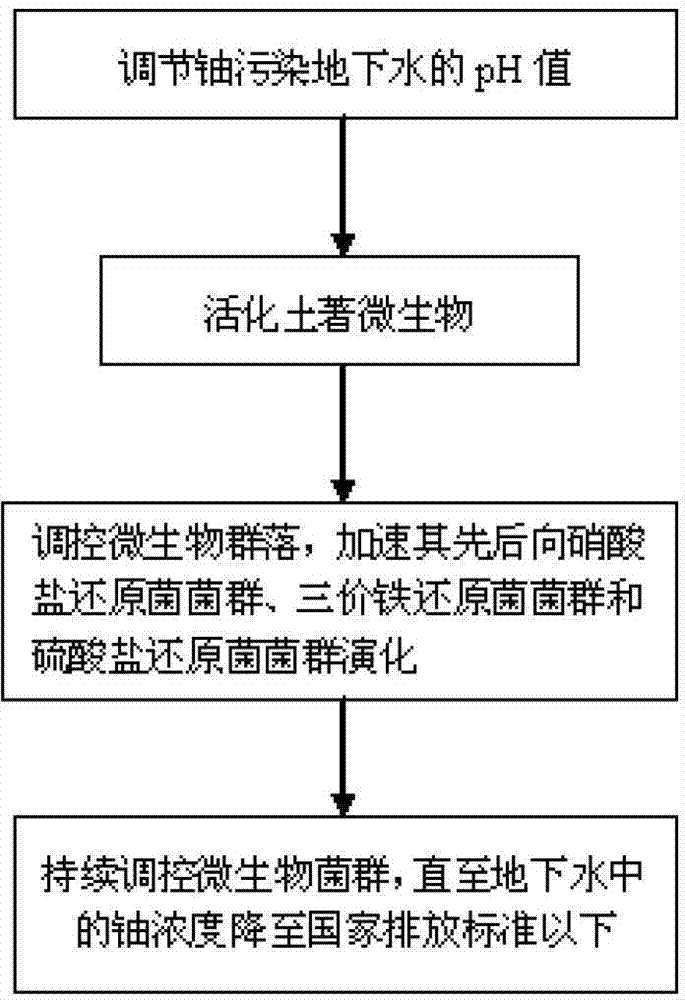Method of using native function microflora to in-situ purify ground water polluted by uranium
A technology of functional microorganisms and microbial communities, applied in the field of in-situ restoration, can solve problems such as large interference of chemical components, difficult secondary treatment, secondary environmental pollution, etc., achieve low operating costs, easy control of the treatment process, and no secondary pollution Effect
- Summary
- Abstract
- Description
- Claims
- Application Information
AI Technical Summary
Problems solved by technology
Method used
Image
Examples
specific Embodiment approach
[0045] A method for in-situ remediation of uranium-contaminated groundwater using indigenous functional microbial communities, the specific steps of which are:
[0046] (1) Uranium-contaminated groundwater samples and soil collection
[0047] The uranium-contaminated groundwater is collected in the monitoring well of the uranium tailings pond, and the soil is collected next to the monitoring well for anaerobic preservation.
[0048] (2) Activation of indigenous functional microorganisms
[0049] with 30 mM NaHCO 3 The solution adjusts the pH of the uranium-contaminated groundwater to a range of 6.5-7.5, and then mixes the soil and the uranium-contaminated groundwater after the pH adjustment in a jar, adds carbon source materials, and passes through nitrogen to exhaust oxygen. A rubber stopper and a sealing film are used to seal the mouth of the jar, and then the jar is left to stand anaerobically, in the dark and at a constant temperature to activate the indigenous functiona...
Embodiment 1
[0055] Example 1, in an anaerobic bioreactor, add 1 L of uranium-contaminated groundwater with a uranium concentration of 0.462 mg / L and 50 g of fresh soil (water content 42%), add 4.5 g of glucose as a carbon source, and improve the function of the native The microbial community was continuously regulated, and the uranium concentration in the uranium-contaminated groundwater in the anaerobic bioreactor decreased to 0.040 mg / L after 75 days.
Embodiment 2
[0056] Example 2, in the anaerobic bioreactor, adding 1 L of uranium-contaminated groundwater with a uranium concentration of 0.462 mg / L and 50 g of fresh soil (water content 42%), adding 5 g of glucose as a carbon source, and affecting the native function The microbial community was continuously regulated, and the uranium concentration in the uranium-contaminated groundwater in the anaerobic bioreactor decreased to 0.037 mg / L after 105 days.
PUM
 Login to View More
Login to View More Abstract
Description
Claims
Application Information
 Login to View More
Login to View More - R&D
- Intellectual Property
- Life Sciences
- Materials
- Tech Scout
- Unparalleled Data Quality
- Higher Quality Content
- 60% Fewer Hallucinations
Browse by: Latest US Patents, China's latest patents, Technical Efficacy Thesaurus, Application Domain, Technology Topic, Popular Technical Reports.
© 2025 PatSnap. All rights reserved.Legal|Privacy policy|Modern Slavery Act Transparency Statement|Sitemap|About US| Contact US: help@patsnap.com

